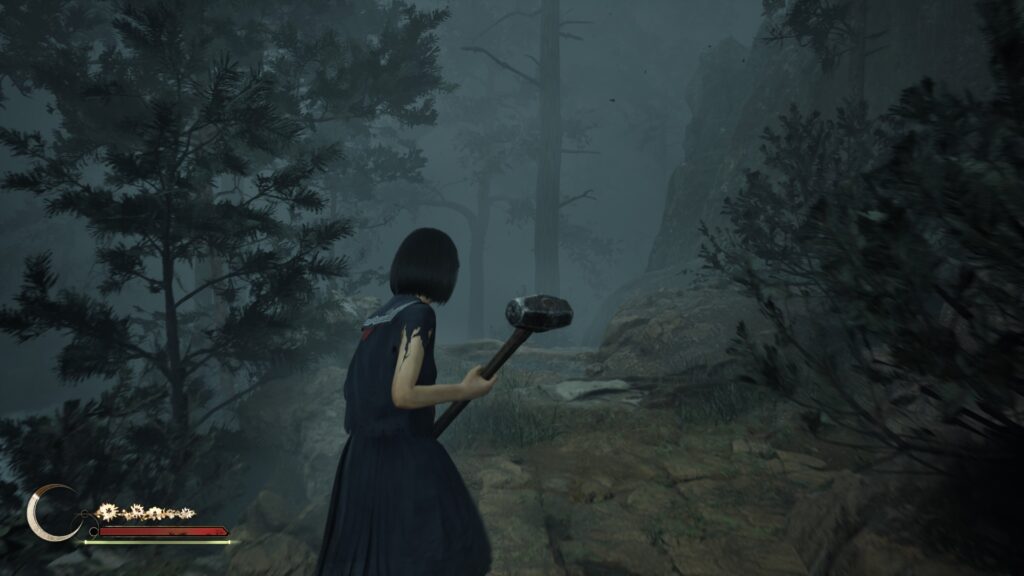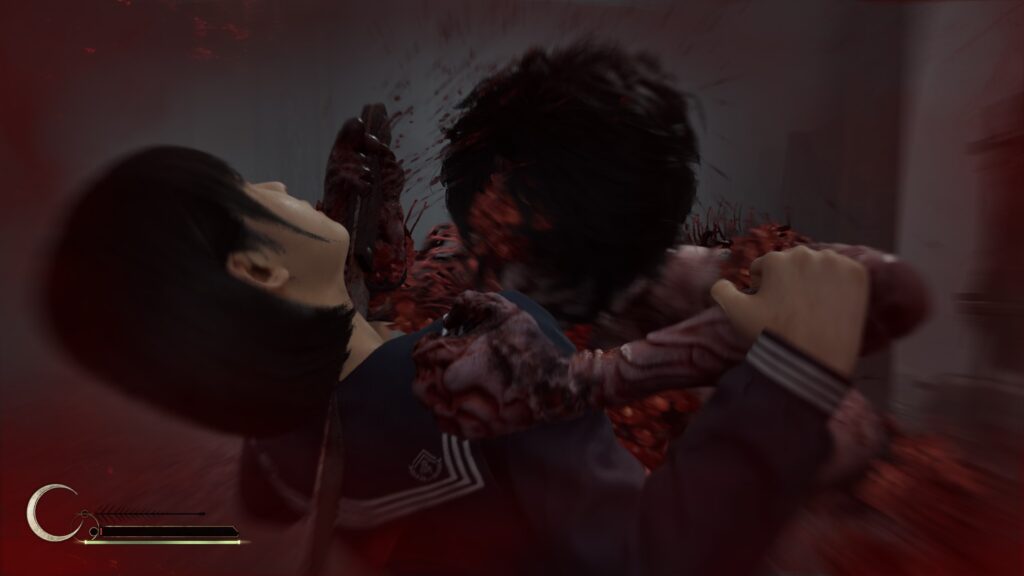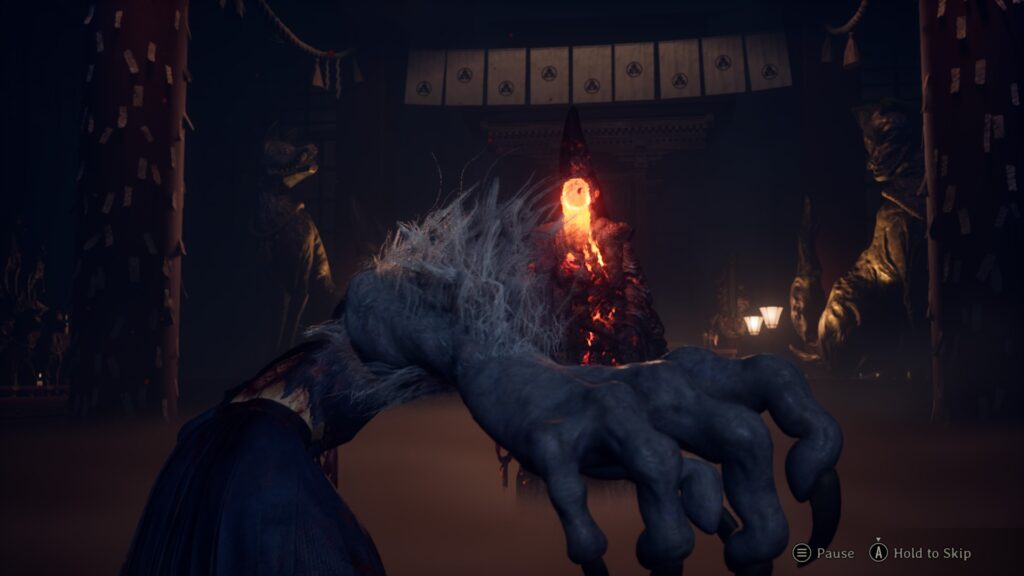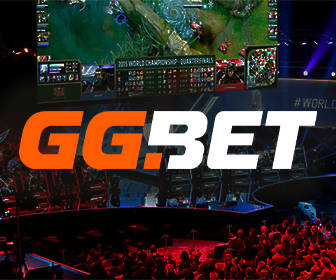Silent Hill F is not only the first brand new survival horror game in the franchise in a long time but also shows off the idea of spinoffing the series into new locales and situations. We move from the horrors of America for a trip to 1960s Japan. While the game does present a fresh take on the series, its gameplay feels like it’s being pulled between two horrors.
Cursed All Over
Our story follows Hinako, a teenage girl in a rural mountain town. One day a fog rolls in that seems to cause everyone to disappear, and the town is now full of strange monsters out to get her. She not only needs to navigate the town with the remaining survivors, but a strange man seems to haunt her nightmares.
The story is great, and the game avoids retreading the themes and plot of previous Silent Hills. Hinako is portrayed as a tomboy and someone who does not like the role of women as nothing more than a traditional housewife to a man, which upsets her father, who views her as less than her older, married sister. And the girls of the village treat her as an outsider and a freak because she doesn’t act like the other girls, and her best childhood friend is a boy who they are always doing non-traditional games with. The impact of misogyny and how it can be inflicted by both men and women is on display here.
While the story may be different, you’re still going to wander around seemingly normal environments, getting into fights and puzzle solving, with Silent Hill F doing things a bit differently with both.
Spooky Soulslike?
The combat system here feels like an attempt to mirror the more personal and methodical fighting of a soulslike. You’ll pick up weapons from the environment (while having stock weapons for the nightmare world). The everyday weapons have durability and can break after being overused, but there are toolkits that can be found. Inventory management is a big deal, as you start with a limited inventory and are able to find multiple recovery items that heal or provide other bonuses. You can find inventory upgrades which are definitely worth seeking.

Combat plays a far stronger role here than in previous entries, which does distract from the exploration (source: Author)
Sanity is a new resource that works with the advanced techniques for fighting. You have a light and heavy attack, which both drain stamina on use. By holding down focus, you’ll consume sanity to either charge for a strong attack or try and counter the enemy when they flash to perform a stunning blow. Sanity can also drain if you are hit by certain attacks, and running out will mean increased health damage. You can sell certain items for “faith” at the local shrines/save points that can be used to upgrade your stats and equip omamoris to provide passive boosts.
The enemy design here is great despite only having a few main types that show up. Each one moves and behaves differently, with a lot of idle animations and weird posturing to make it hard to read them. These are not your basic mannequin monsters from the previous games, which also go into the newly designed boss fights that are far more lively than previous ones. I’ll talk about this further down, but the combat feels less about survival horror, and more like a slower take on a soulslike.
Brain Scratching Scares
For those fearing that a new Silent Hill wouldn’t have fiendishly difficult puzzles, I can put those aside. The puzzle design returns to the roots of the series and survival horror, as you must use knowledge both in and outside of the game if you want to solve them.
I did this on the highest puzzle difficulty, and it was certainly a challenge. One problem that I have is that some of the puzzles require you to understand logic or information that the game makes no attempt to reference or educate the player on. The very first and last puzzles I had to look up the solutions, and even knowing it, I had no idea how the clues were supposed to reference that. And that represents a breakdown in puzzle design — if the clues still don’t make sense after you solved it, then the puzzle and/or clues weren’t good to begin with.
It’s like asking someone to solve a puzzle related to John and Jane’s favorite colors, but the game never tells you who John and Jane are and expects you to know who the game developer’s friends are as a reference. This feels like a return to the player-unfriendly puzzle design that dominated the adventure genre from the 80s on.
The one upside is that the puzzles come paired with an excellent journal system, not only keeping track of the characters and monsters, but providing a collection of all found hints and how they relate to each puzzle; something I would love to see standardized among adventure games. However, this does come at a cost; there are far fewer puzzles compared to previous entries, and a greater focus on combat that takes me to where my issues with the game are.
All the Action and Survival Horror
Combat has never been the focus of a Silent Hill game, and has functionally been a bit janky at best, but this is the first game to have a fully built combat engine, and “combat engine” and “survival horror” don’t really work together.
The as-for-mentioned soulslike style on paper seems like it would work for a survival horror game — Hinako has very long wind-up and recovery animations, so every attack has to be planned out. However, you also have a dodge with I-frames and a punish attack. The game is heavily focused on stunning enemies to deliver more damage, which heavy strikes, focus strikes, and your punish can achieve, and the game is really going to make you use them.

While the game boasts to be survival horror, there are a lot of action game and soulslike design featured, including unblockable grabs (source Author)
This is by far the most combat-intensive Silent Hill game I’ve seen yet. The horror of being in a town beset by a curse starts to fade after your umpteenth fight with an enemy as you rip them apart. What I really didn’t like from a horror standpoint is that the game wants you to avoid combat and gives you the option to sneak by enemies in spots…and then it locks you into arenas to fight your way out of. At one point, the game practically gives you a devil trigger and asks you to rip and tear until it is done.
And as another point about enemy design, I understand the subtext of featuring an enemy that is about the horror of birth in a game about a girl struggling with misogyny, but having an enemy that can infinitely respawn other enemies in a required arena in a survival horror game starts to get annoying and not scary.
And when you are in those high-action segments, you are still using the very slow, very stilted combat system. While you can upgrade your stamina and sanity, along with the help of the omamoris, they don’t suddenly make the combat faster or provide a new dynamic, such as the auto locks featured in the Callisto Protocol. Sometimes, the enemies just refuse to use any counter-able attack, and you’ll need to rely on hopefully getting the stagger off or you will be attacked easily. There are some omamoris that are really good, but they are tied to the random draw; proving the real psychological horror is gacha. The very fact that there are repeated arena fights in a Silent Hill game is borderline tempting for me to give this game an F just on that alone.
Not so Final
Perhaps the biggest disappointment is that all this was designed around playing the game at a minimum 3 times, with a total of 5 endings. As a first, this is the only horror game I could think of that actually adds in new challenges and puzzles on repeated plays through the main quest. However, this is all built on the same annoying puzzle design and repetitive combat. I do like that the world is different, leading to more information and additional content, but you’re going to have to go through the entire game again to start to see this. The best parts of this game are when you are able to wander around looking for clues and investigating, and you are able to do far more of that on your second playthrough and beyond.

Even with different endings, you’re still going to be hacking and slashing through the game’s combat portions (source: Author)
Besides having upgraded stats to decrease the difficulty, just having more inventory space to hold and experiment with the additional items also makes things easier. An item I neglected on my first run that would have helped tremendously is the one that gives you infinite stamina for a few minutes.
However, asking the player to repeat the majority of what they just did so that the story makes sense doesn’t really work in my opinion. Either the game needs to feel like a different experience, such as Ethan Must Die mode from Resident Evil 7, offer a brand new experience like the Route A/ Route Bs of Resident Evil 2, or just let the player tear through everything they’ve already done to get to the new stuff.
A Loud Failure
For me, Silent Hill F fails when it comes to puzzle and combat, meaning as a survival or action horror game, it just doesn’t work. I wonder if the developers saw the success of Resident Evil 7 + and felt that the solution to bring back Silent Hill was just to add more combat and action. The story and monster designs are great, but focusing so much on combat, even to the game’s difficult final boss, feels like a bit of a betrayal of the series. It’s hard to be introspective and learn more about yourself and society when you are busy dodging multi-hit combos from all sides while trying to find the punish tell.
Be sure to follow me on Bluesky for all my updates on design talks and random game design questions

